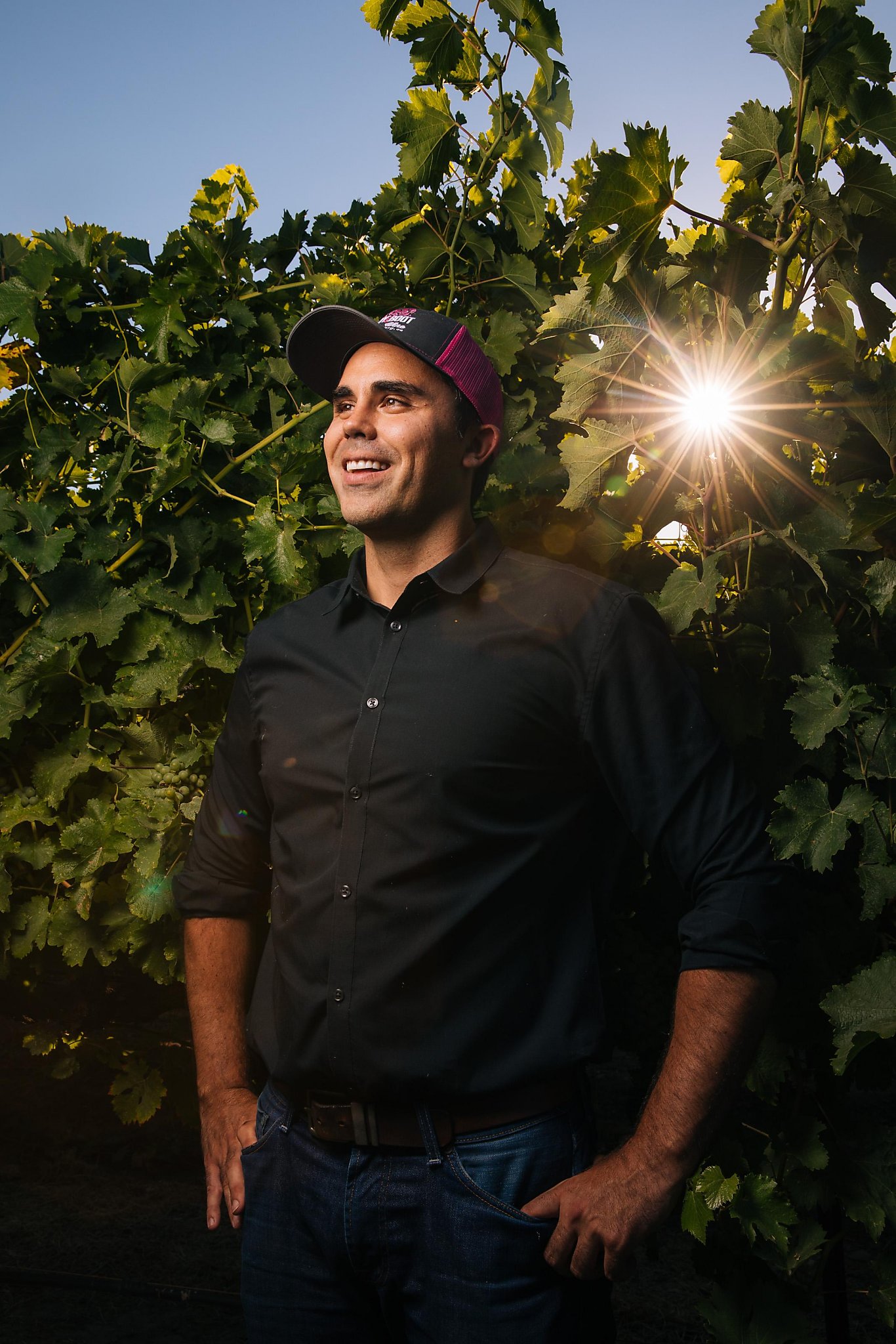[…] when Chardonnay was crowned king in the 1980s, surrounded by a royal court of Sauvignon Blanc and Pinot Grigio, Chenin got the hook.
“I was always looking for an alternative white, a good variety that could maintain acidity,” said Leo Hansen, a Danish sommelier who started his Leo Steen brand in Healdsburg back in 2004.
People were ripping out and planting other things, so I started trying to help preserve these small old spots of Chenin.
Born into an oil-drilling family in northeast Texas, he landed his first winery gig in the Loire Valley while finishing his plant pathology/microbiology degree at Texas A&M. “I was not a mindful wine consumer when I was in France – that was the infancy of my wine journey – but I do remember these really steely, crisp white wines that they made,” said Roark.
“I grew up in the oil fields, and there’s a vineyard in the middle of an oil field that’s Chenin Blanc?” he laughed.
For a small vineyard, the list of wineries using Jurassic Park fruit is more than a dozen long, including Municipal Winemakers, Lieu Dit, Habit, Kunin, Santa Barbara Winery, Birichino and Field Recordings.
“The neatest thing about it was that nobody was buying any Chenin Blanc, and then somehow this market sort of began,” said Ben Merz of Coastal Vineyard Care Associates, which started farming the vineyard in 2009.
All of these boutique wineries started looking for Chenin Blanc so, initially, just to find a home for the grapes, we sold a ton here and there to as many people as we could find.
“What I love about Chenin Blanc is that it’s so old that it’s new again,” said Dry Creek winemaker Tim Bell, who’s seen a notable uptick in the past three years and plans to make even more than the current 18,500 annual cases in the future.
Chenin is all the buzz there right now, as the region’s increasing shift from quantity to quality grape-growing is showing that it can do for whites what Lodi has done for reds.
“I was very pleasantly surprised,” said Haarmeyer, who started working with the farmers of his Clarksburg Chenin vineyard after 2009 to improve the potential by limiting yields and picking while sugars were low and acids high.
Tom Merwin’s family has tilled the Clarksburg soil for 100 years, and the eighth-generation farmer recalls when his dad turned to wine grapes more than 20 years ago when the commodity crop prices were floundering.
A Napa escapee, he headed to the Sierra Foothills in 2004 to make something other than big Cabernet and Chardonnay, and consults for a handful of wineries, including Elevation 10, where he makes Chenin Blanc from Clarksburg.
more on sfgate.com




